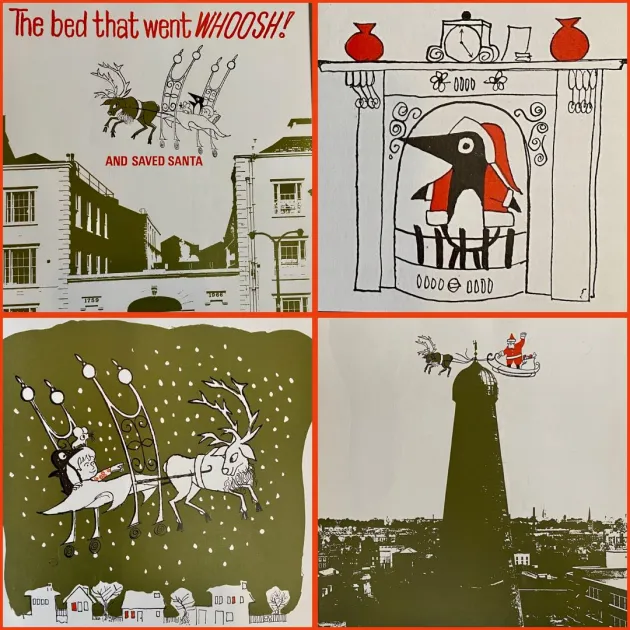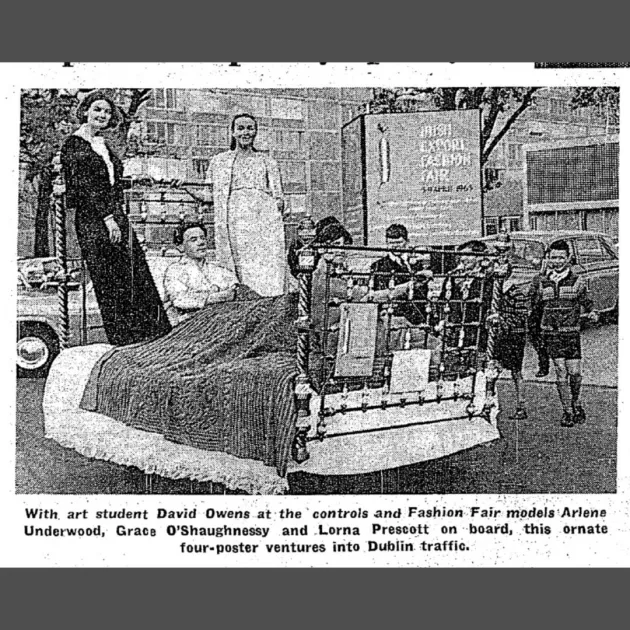As if by magic….the bed that went whoosh!
Published on 6th December 2024
Books created for children were never meant to last, so we're lucky to have the collections of Dublin City Library and Archive. Childhood experiences become vivid memories. The books of our childhood are a pleasure; like remembering parts of oneself in a reunion with old friends.
And as if by magic, our colleague Jessica recently discovered this very seasonal item of ephemera, The Bed that went Whoosh and Saved Santa, a supplement included in the Guinness magazine The Harp of December 1966. It’s a continuation of a series of books written by Bernard Share and illustrated by William Bolger and published in the years prior to this Christmas special. The series focuses on the escapades of a little boy called Niall, his friends Upstairs the penguin and Whiskers the mouse and a very important magic bed. The bed takes Niall and his companions on all sorts of adventures to Dublin, Ossory, New York, Moyle and Waterford. In this case, Niall finds himself lending Santa his flying bed after the sleigh gets stuck on the top of the Guinness windmill!

The series answered a need for stories set in surroundings familiar to Irish children but with the same excitement offered by books being produced internationally at that time. The previous decade had seen the publication of the American Harold’s Purple Crayon (1955), for example, with its effective use of line drawings or the British Bed-knob and Broomstick (1958), a compilation edition of Mary Norton’s novels, and later made into a movie by Disney (1971). Whilst the idea that gentle magic might make an appearance in the everyday life was, of course, already a feature of children’s books, by the 1950s and 60s, illustrators were using an exciting visual language of simple abstract forms, the space of the page and bright contrasting colours to tell these stories. Bolger’s engaging line drawings, use of scale and colour and photographs and prints of familiar landmarks all drew children into Niall’s journeys through time and space.

Bolger and Share met whilst working in the advertising agency O'Kennedy Brindley, later moving to Janus Advertising and then setting up as Verbiage Enterprises in 1962. Creating work for the IDA, BIM, Bord Fáilte and Coras Tráchtála, amongst others, they were a part of a generation who witnessed the emergence of new technologies, graphic design as a profession, an increased sensibility to design more generally and an openness to international influence in this regard. The publisher Alan Figgis clearly saw the value of a series like this, and published six stories in both English and Irish between 1964 and 1965. The promotional potential of the stories gave rise to Figgis purchasing an actual antique bed, which had apparently originally resided in an old castle, and having it fitted with a battery operated engine and a steering wheel to venture forth through Dublin’s traffic.
Submitted by Teresa B